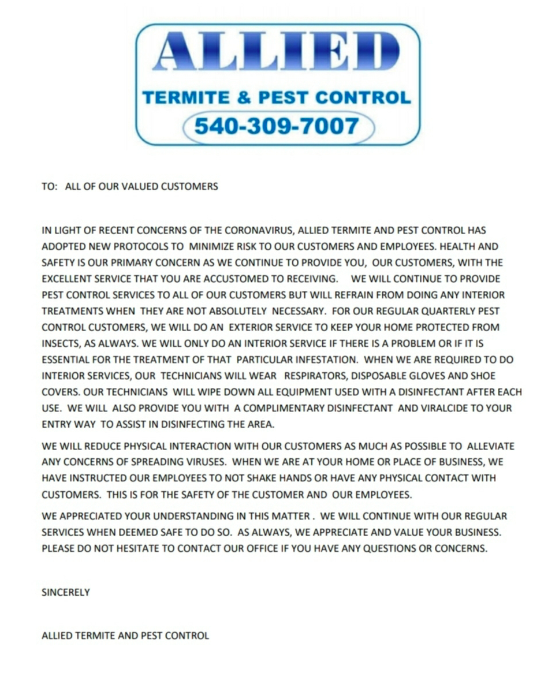Bug Identification
Pests are everywhere, in the garden, all over the yard, even inside the house. Not sure which bug is pestering you?
Take a look below at some common pests found in buildings in Virginia.

Termite (rhinotermitidae family)
Appearance: Varied in size, white or brown in color, straight abdomens, often around 0.25 inches in length.
Information: Wood in direct contact with the ground or high moisture locations attract termites. Termites can severely damage a structure in a very short amount of time. One colony of termites can devour a foot of 2×4 in under 6 months.
Where to Look: Spending much of their time underground, look for small tunnels of mud, or mud tubes, around the foundation of a home or building. These tubes get the termites from their nest to your building.
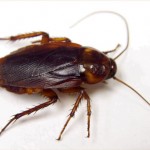
American Cockroach (periplaneta americana)
Appearance: Glossy, reddish brown body, with darker brown marks at the center. Males have longer wings than females, but they generally look alike. Can grow up to approximately 1.6 inches in length.
Information: Female American cockroaches can lay about a dozen eggs at a time. They enjoy warm, moist climates, though they have adapted to the cold as long as they have shelter, such a house or building. The secretions produced by American cockroaches can alter the flavor of food, and they can transport disease-causing bacteria on their legs, depositing them around the home they have infested.
Where to Look: Basements, sewers, crawl spaces, porches, foundations, walkways adjacent to buildings.
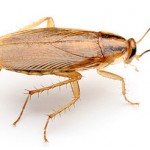
German Cockroach (blattella germanica)
Appearance: Smaller than other cockroach types they grow to about 0.5 to 0.6 inches in length. Their coloring can range from tan to almost black, with two dark streaks on the thorax. Both males and females have wings the length of the body.
Information: German cockroach egg capsules contain about 30 eggs each, and several generations can be born in one year. Females often leave egg capsules near a food and water source so the nymphs can feed immediately after hatching. The egg capsules are shaped like a small pill; if one is seen within a home, there are more than likely many more cockroaches in the house.
Where to Look: Bathrooms (vents and plumbing), under sinks, behind stoves, and nooks and crannies (small spaces are preferred by this species of cockroach).
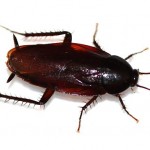
Smokybrown Cockroach (periplaneta fuliginosa)
Appearance: Dark brown/mahogany coloring, dark and shiny thorax, can grow up to about 1.5 inches in length.
Information: This cockroach requires more water than most other species and it therefore prefers moist climates or to be near a constant source of water.
Where to Look: Will survive cold weather indoors, during warmer weather they often live around the perimeter of buildings.
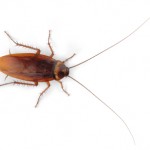
Brown-banded Cockroach (supella longipalpa)
Appearance: Approximately 5/8 inches in length, coloring ranging from tan to light brown. Has two light-colored bands across the wings and abdomen.
Information: They have a very wide distribution within the United States and are quite common.
Where to Look: Requiring less moisture than other cockroaches, they can be found all over the house, from the kitchen to the bedroom and living room.
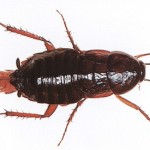
Oriental Cockroach (blatta orientalis)
Appearance: Coloring ranges from dark brown to black. Females can grow to 1.06 inches in length and have two tiny, useless wings. Males can grow to 1.14 inches in length and have longer wings that cover two thirds of the body.
Information: The egg cases of the oriental cockroach start as a light yellowish color, eventually turning brown and then almost black in color and can hold up to 18 eggs. These cockroaches can be elusive and difficult to detect.
Where to Look: Drains, damp basements, sewers, porches, under mulch, in bushes, and any other damp locations.
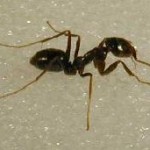
Crazy Ant (paratrechina longicornis)
Appearance: Small, dark in color, often have a slight blue iridescence. The antennae and legs are very long, making them easy to distinguish from other types of ants.
Information: Called “crazy ants” because they do not follow straight lines, rather they run around erratically. They are one of the most widespread species of ant in the world.
Where to Look: Kitchen, other places where food is eaten (they are attracted to sweet and greasy foods), garden, other outdoors areas.
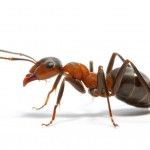
Fire Ant (solenopsis)
Appearance: Workers are small, males are larger with wings, the queen fire ant is the largest of all, also with wings.
Information: They bite to get a grip, followed by a sting from the abdomen. Their colonies are large mounds in open areas.
Where to Look: Voids within the home, such as hollow doors and walls, outside in the soil.

Pharaoh Ant (monomorium pharaonis)
Appearance: Small, almost transparent yellow or light brown.
Information: Each colony contains many queens, which means one colony can very quickly fragment into many colonies. A single colony can break apart and occupy very large spaces within a very short amount of time.
Where to Look: Voids in walls, under floors, in furniture. Nests can be very small and difficult to detect.

Carpenter Ant (Camponotus)
Appearance: Large ants, up to 1 inch in length.
Information: Commonly infest wooden structures and buildings. They can cause serious damage to a structure or house.
Where to Look: Areas with moist wood, inside and outside a building or house.
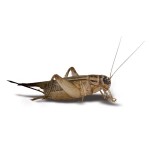
Cricket (Gryllidae)
Appearance: Have somewhats flattened bodies and long antennae, often confused with grasshoppers, as they have very similar body structures.
Information: There are over 900 species of crickets. The chirping of crickets (when they rub their legs together) can be a nuisance. They are harmless to humans.
Where to Look: Mainly found outdoors, but they can move inside.
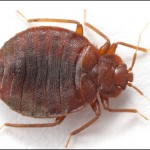
Bed Bug (cimex lecturlarius)
Appearance: Adults are light brown to reddish-brown, oval in shaped, with flattened bodies. They grow to between 0.16 and 0.20 in length. Newly hatched nymphs are ligther in color and translucent; they can be difficult to spot. They are nocturnal.
Information: Parasitic insects, feeding exclusively on blood. Can cause skin rashes and allergic symptoms.
Where to Look: In and around the bed, behind wallpaper and baseboards. They are able to survive in temporary habitats, such as suitcases, bags, and vehicle seats, making it easy to spread them from location to location.

Earwig (dermaptera order)
Appearance: Pair of forceps pincers on the abdomen, most have flattened bodies and can range from 0.28 to 1.97 inches in length. Colors vary.
Information: Active at night, hidden during the day, they scavange on dead pant and animal material.
Where to Look: Found in cool, damp places, mostly outdoors but can be found inside in dark, damp areas such as the basement.

Millipede (diplopoda class)
Appearance: Most have elongated bodies with more than 20 segments, most segments having 2 pairs of legs. Some smaller species are shorter and able to roll into a ball. Color varies.
Information: In large numbers, can make an extremely vexing noise.
Where to Look: Found mostly outdoors, but can move inside at times.

Silverfish (lepisma saccharina)
Appearance: Anywhere from 0.5 to 1 inch in length, their abdomens taper at the end and they develop a grayish, metallic shine as they get older, giving them the appearance of a fish.
Information: They consume things that contain starches and dextrin, including book bindings, clothing, paper, photos, glue, hair, plaster, and sugar. They can destroy property if not removed from the home.
Where to Look: Bathtubs, showers, attics, basements, they require moisture.

Spider (arachnid)
Appearance: Variety of colors and sizes, have 8 legs and a segmented body.
Information: Black Widow and Brown Recluse species are poisonous. Webs are a good indication of spiders, even if you are unable to see the actual spider.
Where to Look: Indoors and outside, many species prefer darker areas, such as corners, cracks, in cabinets, and in closets.

Stink Bug (halyomorpha halys)
Appearance: Generally about 0.5 inches in length, they can be brown or brownish-gray in color. From above, a stink bug often appears to look like a shield with legs.
Information: Name derived from the bug’s tendency to emit a foul smell, secreted from the pores in its thorax, when disturbed. They often invade is mass numbers.
Where to Look: Can be found anywhere within the home, including clinging to curtains, on top of light fixtures, and walking around on the ground. They can fly.

